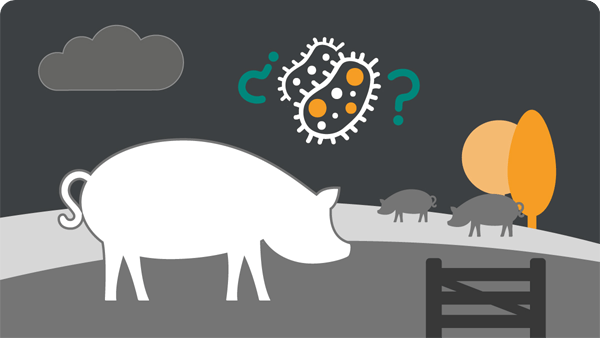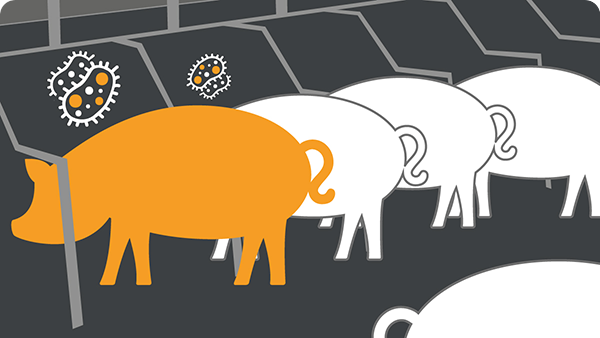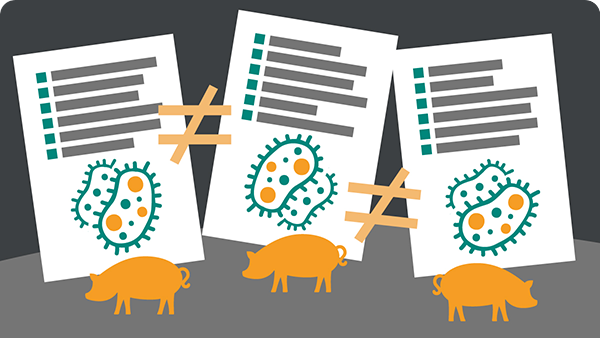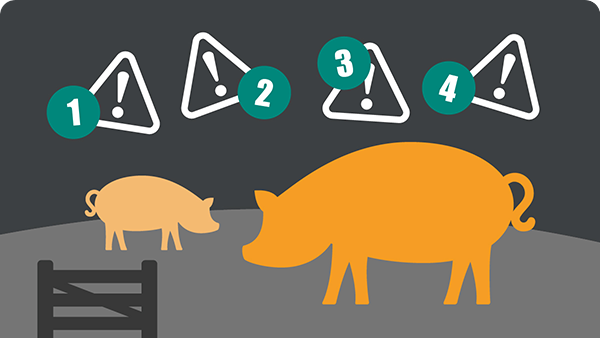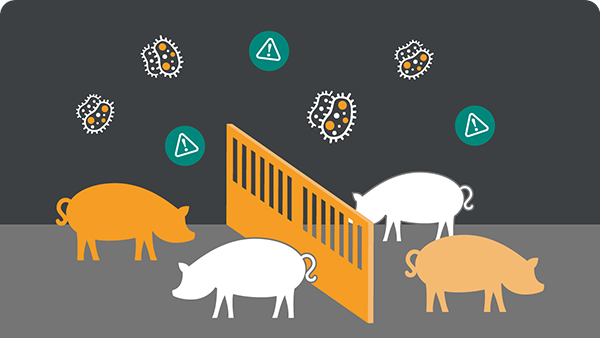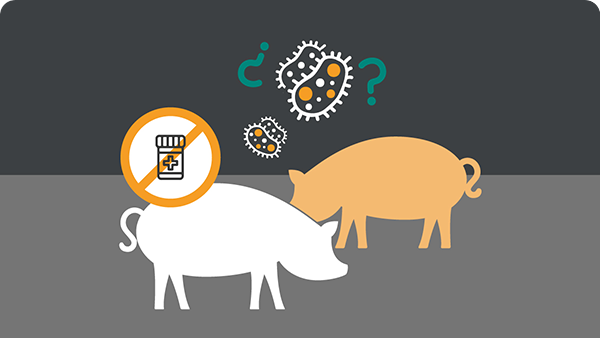
The disease
Prevention of ileitis

Prevention of ileitis
The big secret for an effective control of ileitis is the prevention based on the controlled exposure of the animals to L. intracellularis, with none or minimal disease, this allowing for the development of a protective immune response. The prevention of ileitis will be the topic of this article.
The good news is that this immunity will last until slaughter age, and there will be no relapse of the disease in these animals.
The bad news is that these controlled exposures are easier said than done. In other words, it is not an easy task to accomplish, as each herd may have different kinetics of infection depending on the pig flow, facilities, type of floor, pig density, etc.
Anyhow, below we can find the description of the antimicrobial and vaccine protocols available to control acute outbreaks and the chronic or subclinical disease that represent the second scenario based on the clinical presentation in a herd.

The Disease

L. intracellularis is a gram-negative rod with a sigmoid or curved shape and with a single long flagellum.

Contact us
2 Giralda Farms
Madison, NJ 07940 United States
animal-health-communications@merck.com



